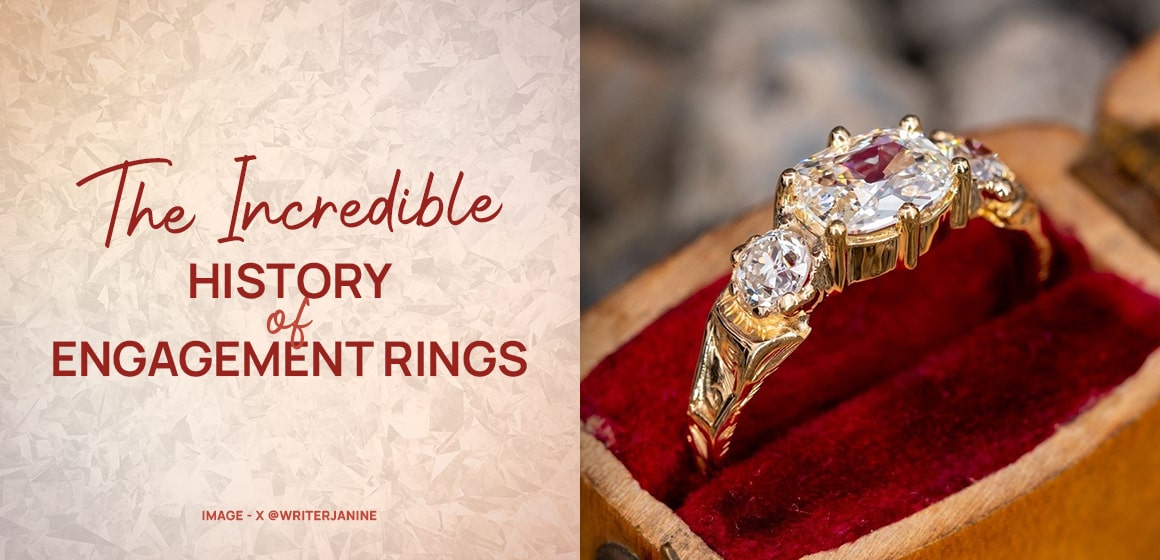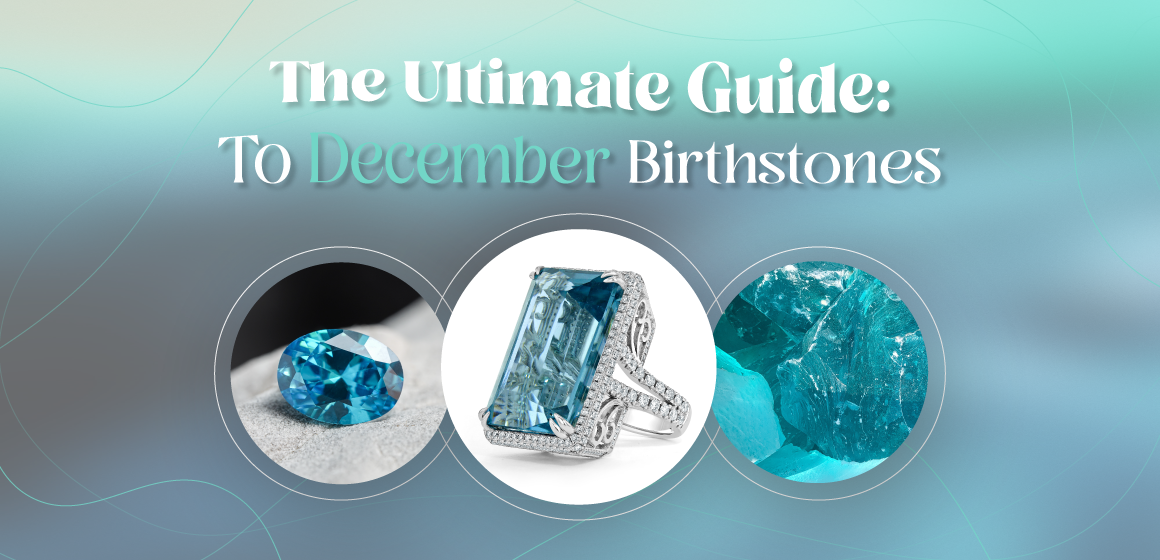Traditionally, engagement rings are given by a man to his fiancée when he asks her to take his hand in marriage.
The rings symbolise the upcoming union between the two people and the tradition goes way back through history. But, where and when did engagement rings start? In ancient times, Egyptians would twist plants into small circles to wear around the finger. For those who were wealthy, ivory or leather would be used instead. Placed on the fourth finger of the left hand, the ring was seen to be connected to the heart by the vena amoris.
It was the Egyptian pharaohs who also first used rings to represent eternity. That’s because a circle has no beginning and no end, and reflects the shape of the sun and the moon, which the Egyptians worshipped. The Egyptians also thought that the open space in the middle of a ring represented a gateway to the unknown.
Today, engagement rings are most often given as part of a surprise proposal of marriage – whether that’s between a man and a woman or a same-sex couple.
Take a look below, where experts at Steven Stone have shared the history of these pre-marital gifts – from ancient times to the modern day.
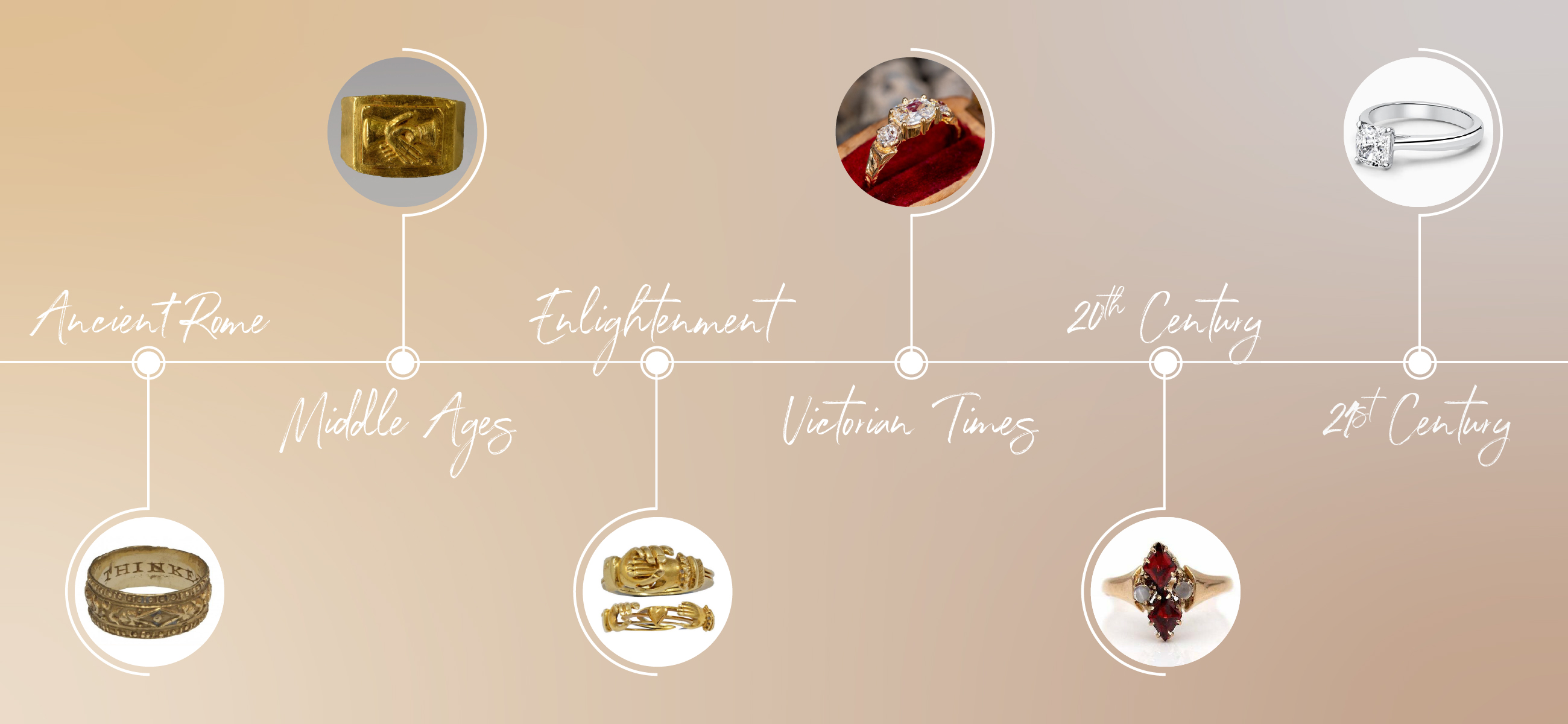
Ancient Rome
Image-conscious Roman women were often given two rings on their wedding day – a gold one that would be worn in public to show their status, and an iron one for everyday wear inside the home. Wedding bands symbolised a man’s ownership of his wife, as well as eternal love.
Starting from the Medieval Times, wedding rings began to be set with precious gems. Medieval Europeans used rubies to symbolize passion, sapphires to symbolize the heavens and diamonds to symbolise steadfast strength.
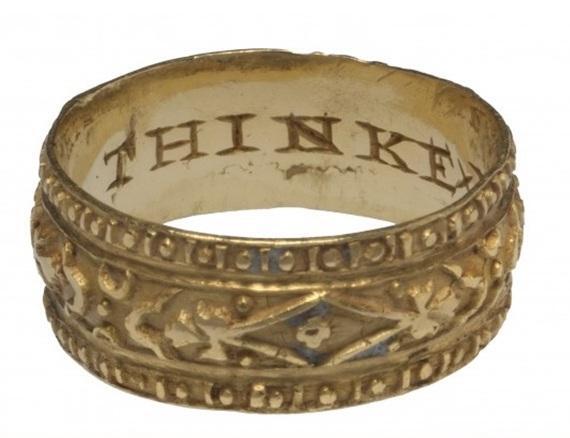
Middle Ages
In 1477 in Vienna, the Archduke Maximillian of Austria gave Mary of Burgundy a betrothal ring on their engagement. This is widely seen as the model for all future engagement rings, as others in the royal court were influenced to do the same. As the wealthy travelled, the tradition of engagement rings quickly spread around Europe.
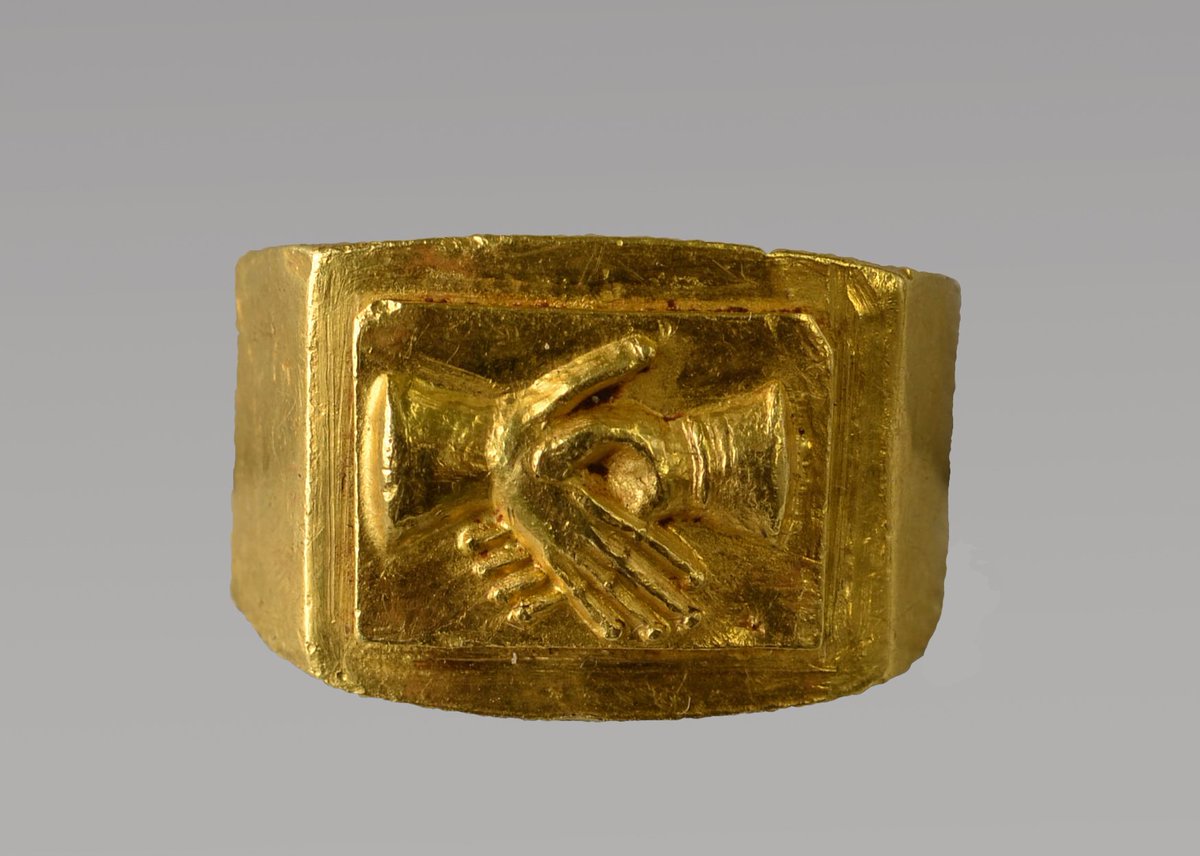
Enlightenment
During the Enlightenment period, gimmal rings were given to symbolise love. Gimmal rings are rings with two or three hoops, that when worn together, join to create one complete ring. The rings often have a clasped hand design, showing the union of two people. Poesy rings were popular between the 15th and 17th centuries in England – made from gold with a short inscription on their inside face, usually from the courtship stories or chapbooks.
When the ring was worn, the message was hidden, making wearers feel as if they were keeping a secret and heightening the romance of the piece.

Victorian times
Engagement rings were still seen as the domain of the upper classes in the Victorian times. The discovery of diamond mines, combined with the industrial revolution, created a perfect environment for jewellery production.
In 1866, diamonds were found in South Africa. They were identified in 1867, and five years later, the diamond output of mines in South Africa exceeded one million carats per year.
Perhaps because of the culture of marriage in the Victorian times, with dowries a popular way of securing an engagement, simple engagement bands were the most common way to display an engagement. They were often worn on the right hand before being transferred to the left hand during the marriage ceremony.
Diamond engagement rings also became increasingly popular at this time due to Queen Victoria’s famed love for diamond jewelry.
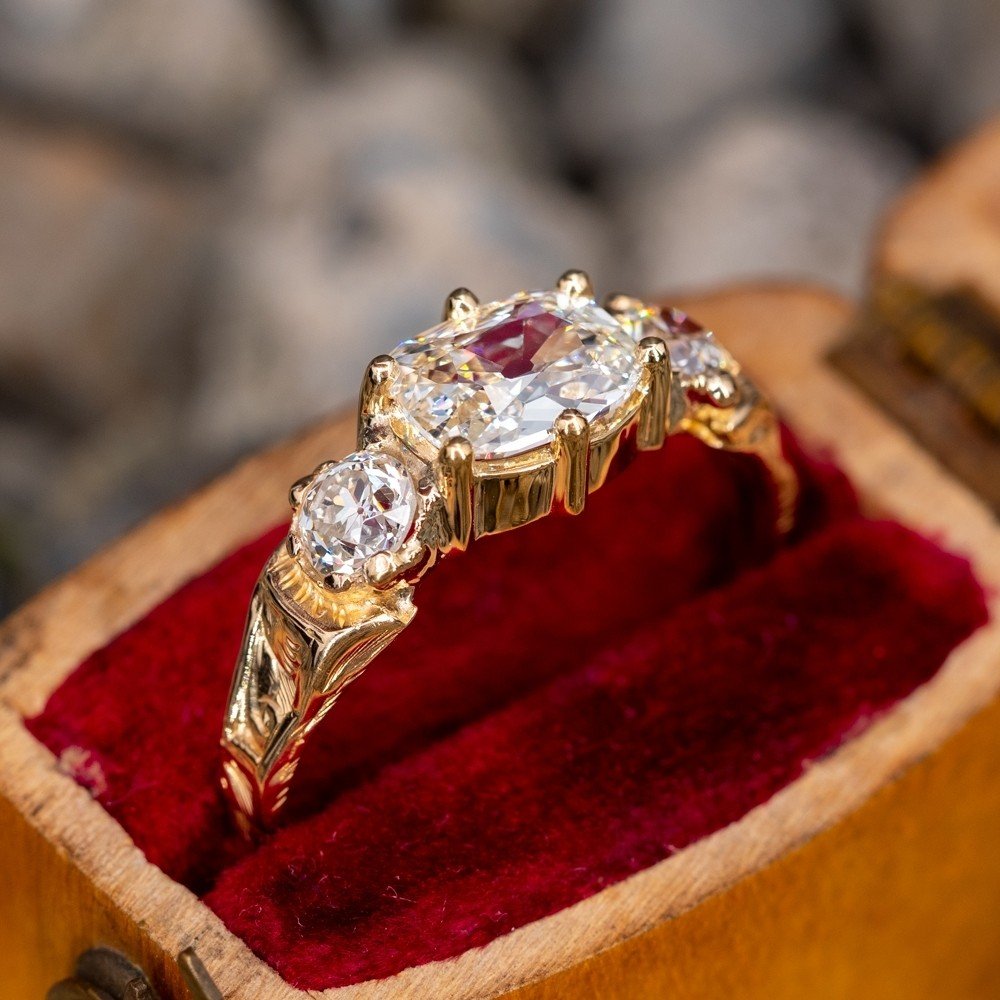
20th century
In the USA, the popularity of diamond engagement rings declined after WW1, and with the Great Depression, they became less relevant to the general population. The prices of diamonds collapsed, and they weren’t popular with the younger generation of adults. In 1939, diamond mining company De Beers started an advertising campaign saying that ‘a diamond is forever’, a campaign slogan that’s still famous to this day.
The campaign worked, and by the early 1940’s, engagement rings were leading lines of jewellery in many department stores around the world. The market was buoyant again. The relationship dynamic between men and women, as well as contemporary gender stereotypes, meant that the engagement ring had a similar purpose to the dowries of the previous century.
In the UK, women could sue men for breaking off a marriage until 1970 under Breach of Promise, but women could change their mind without penalty. For the majority of the 20th century, middle and upper-class women would not have worked. Working class women would often have to give up work in order to get married. If the engagement or marriage fell apart, a woman could be left in ruins. Because of this, women would be able to keep the engagement ring to sell so that she could live off the money whilst her reputation recovered.
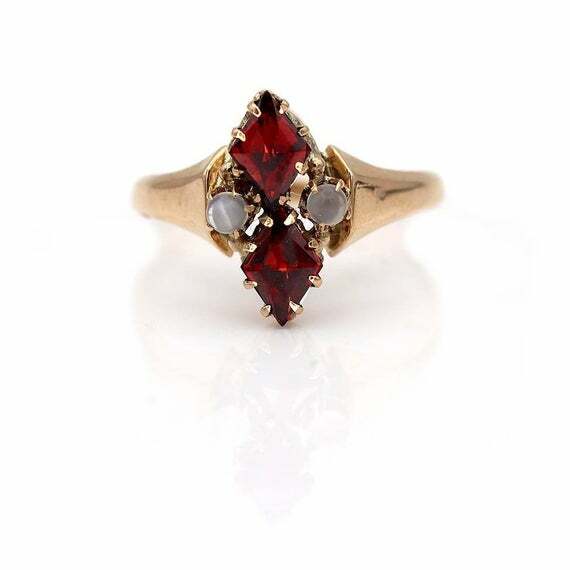
21st century
Since the turn of the century, the culture of engagement has evolved significantly, partly because of the recent reforms of marriage laws regarding same-sex marriage. Generally, most marriages are now love matches rather than arranged pairings, which means that there are two types of proposal: the surprise proposal and the planned proposal – a trend that has emerged on the premise that every relationship is different.
In recent decades, engagement rings are seen as statements of individuality and partnership that are worn by both genders. Both wedding rings and engagement rings are now wedding staples, not just in Western countries, but in any country where couples want an outward token of their love–and some more sparkle in their wardrobe
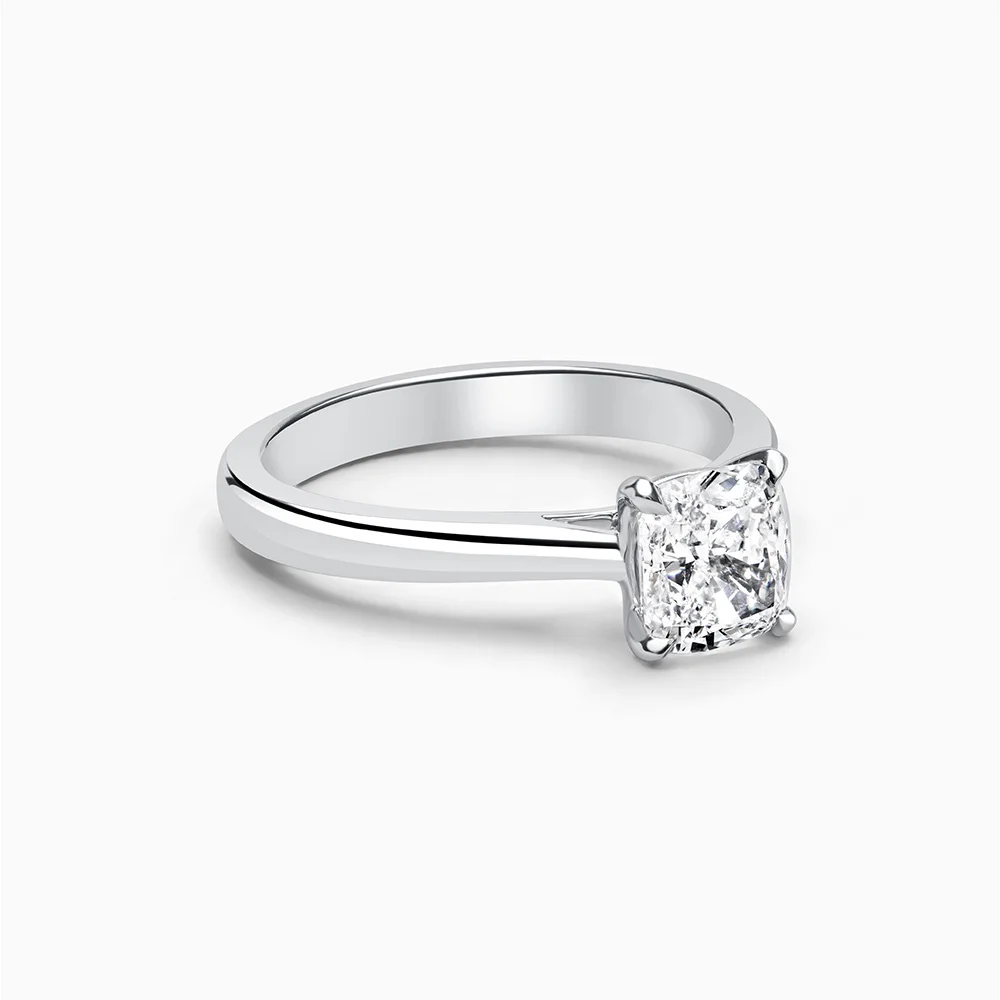
If you’re looking for some jewellery inspiration, why not take a look at our full collection? Whether you’re after a necklace or some diamond earrings, we’ve got you covered. We also have a vast range of engagement and wedding rings.
If you don’t see anything that takes your fancy, we also offer a bespoke service, where our designers will create a unique piece of jewellery that ticks all the boxes.
Follow us on our socials
Pop over to our social platforms to keep up to date with Steven Stone’s latest jewellery content and news.
